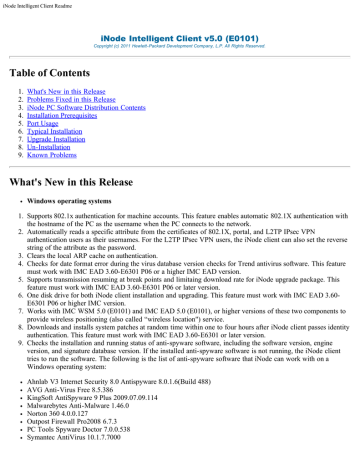
The portal service configurations include:
Inode intelligent client how to#
This step demonstrates how to add a basic user access account to the iMC system and apply for the service configured at step 2. It includes such information as account name and password. This step shows how to add a service that contains no policy, to the iMC system.Īdd a basic access account to the iMC system.Įach user accessing the network must have an account configured in the iMC. You can configure and test portal authentication in six steps, as shown in the following figure:Īdd an access device that supports AAA to the iMC system, so that the access device acts as the AAA client to cooperate with the iMC system.Ī service is a set of policies for user authentication and authorization. In this example, the iNode client is used for portal authentication, instead of the web-based portal authentication mode. L Use the access device as the DHCP server as well. The DHCP server assigns IP addresses for PCs. In this case, you need to configure the access device as the DHCP relay. L Deploy a separate device in the network as the DHCP server. There are two common methods to deploy the DHCP server: Usually, portal authentication is used together with DHCP, which assigns IP addresses for PCs dynamically. The iMC UAM system integrates the AAA server and the portal server. L The RADIUS protocol is used for interaction between the access device and the AAA server. L The portal protocol is used for interaction between the portal server and the access device.
Inode intelligent client Pc#
L HTTP/portal is used for interaction between the PC and the portal server. Portal authentication involves four roles: portal server, AAA server, access device (Switch in the above figure), and PC. All these advantages of portal authentication make it popular in network applications.
Inode intelligent client software#
Besides, portal authentication can be provided through Web pages, in which case no client software installation is necessary. As the portal gateway can be deployed at the access layer or the convergence layer, or even attached to a convergence layer or core layer device, portal authentication can control user accesses very flexibly. Then, all users that connect to the network through the device must pass portal authentication. To deploy portal authentication, you only need to enable portal authentication on a key device, called the portal gateway. Portal authentication can solve this problem. In this case, it is hard to have all users to go through the 802.1X authentication. On a network, usually there are devices of many vendors.


Web interfaces of different versions may vary. This video was recorded based on the following versions: To view this video, click the download link.


 0 kommentar(er)
0 kommentar(er)
